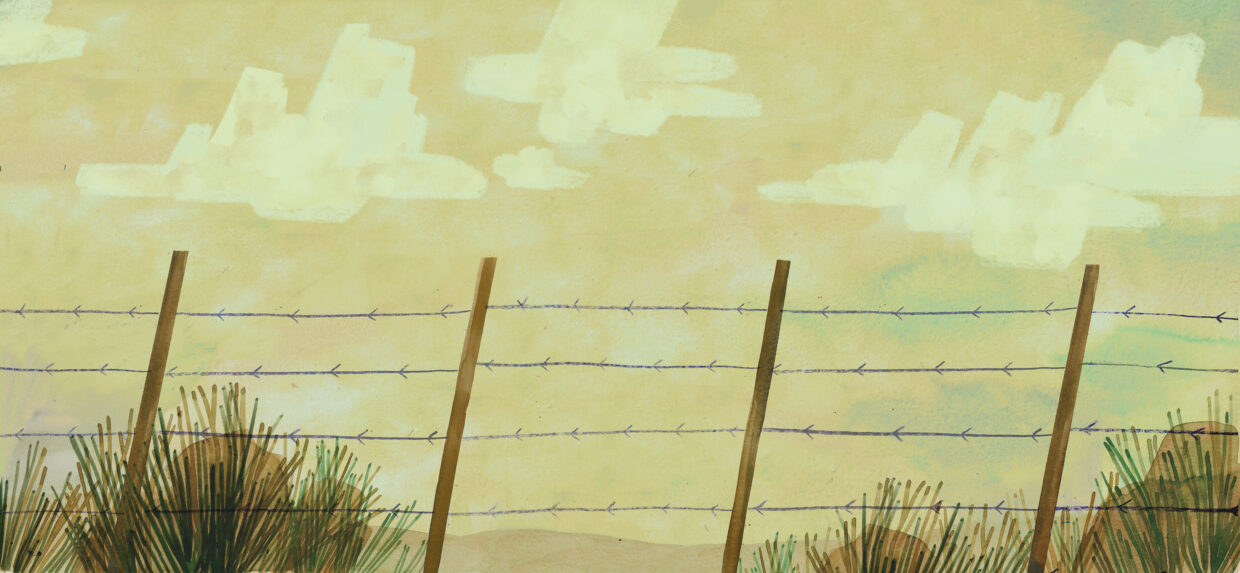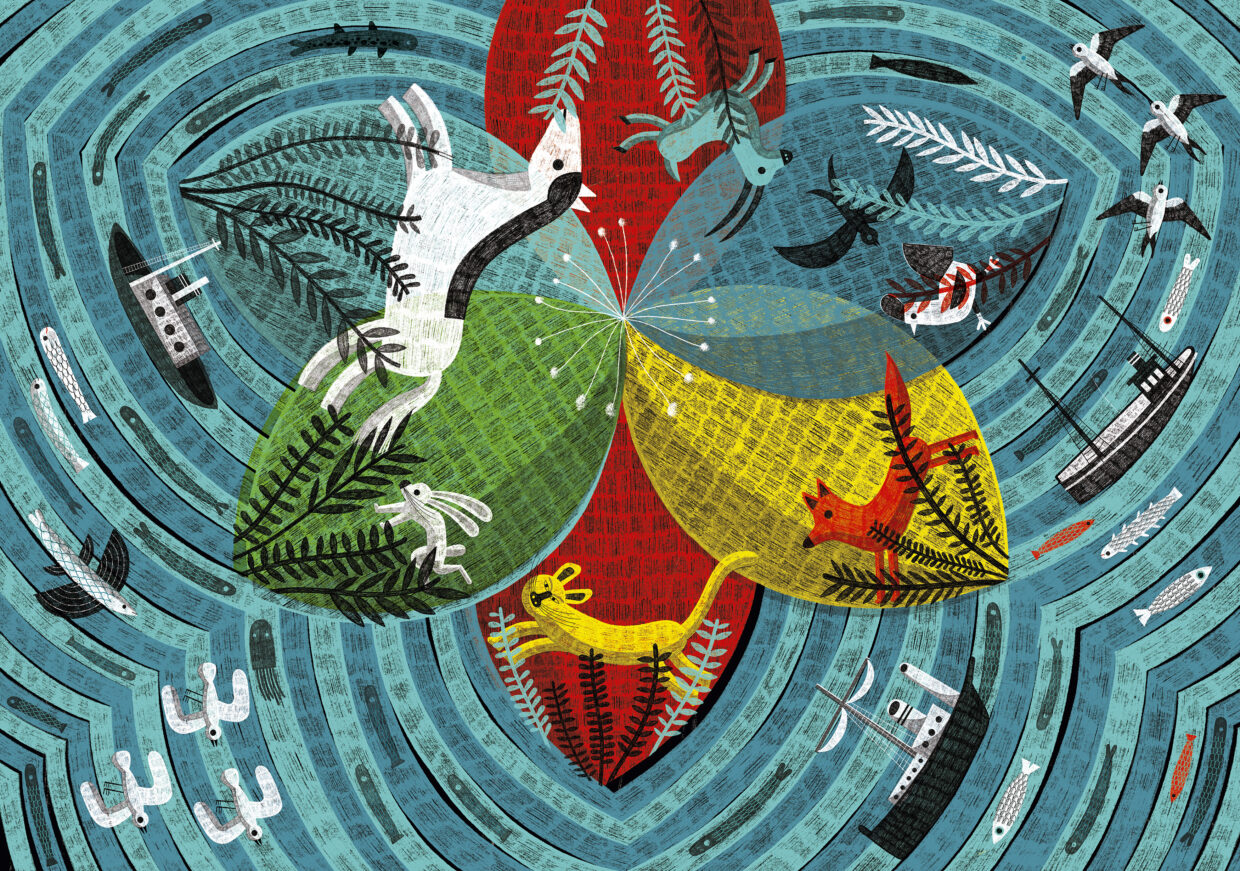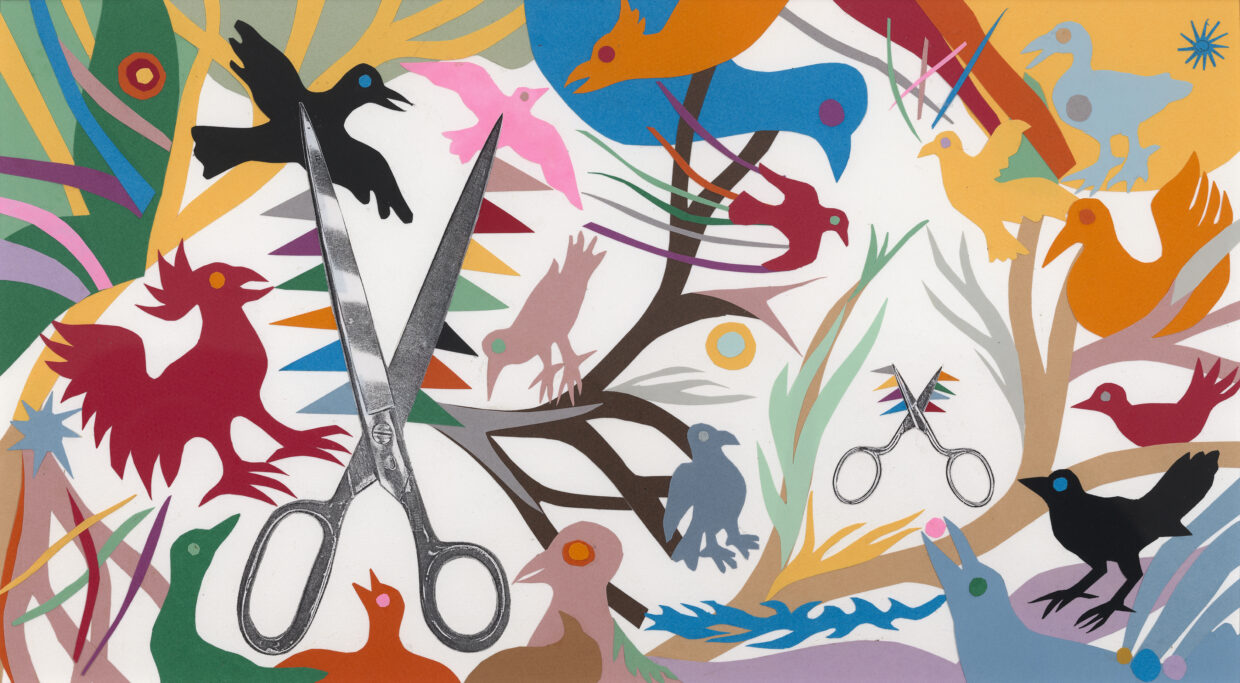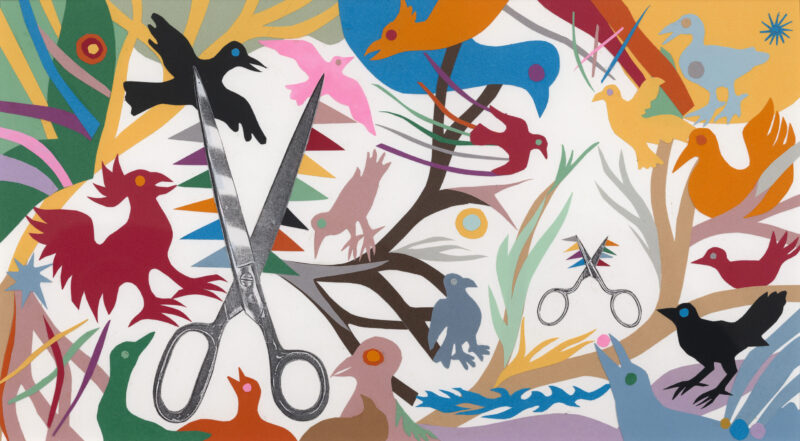If you’ve ever opened a children’s book and thought this should be my wallpaper, know you’re in good company.
Article continues after advertisement
Bruce Handy, the critic/journalist/humorist and multi-genre author, has been obsessed with inside covers for a while. So much so that this month, he puts on a new hat—curator. His exhibit on the under-loved children’s book “endpaper” will debut at the Eric Carle Museum this Monday.
Handy, who is new to museum work and assures me he has “no academic background,” assembled this exhibit out of pure curiosity, with help from a crackerjack team at the Eric Carle Museum and associate curator Isabel Ruiz Cano. His papers were pulled from the museum’s own vast collection and his personal faves, and siloed into four groups by theme. The result is a celebration spanning more than 50 books, from classics like The World of Pooh to fresh-off-the-easel new releases.
I spoke with Handy about the curatorial urge, and what’s so compelling about the best endpapers. Our conversation has been condensed and edited for length and clarity.
*
Brittany Allen: How did you come to curate this exhibit, and what’s your connection to the Eric Carle Museum in general?
Bruce Handy: My connection to the Carle prior to doing this show is really just being a fan. I live in NYC and we have some good friends who used to live in Northampton. Every time I was up there I’d always try to make a point to go. I love picture books and picture book art.
Most of my career’s been in magazine journalism, but when I had kids and started reading to them I got interested in children’s literature as just a fan, and critically I started reviewing kid books for The New York Times. I ended up writing a book about reading children’s literature [Wild Things: The Joy of Reading Children’s Literature as an Adult], and I started writing my own picture books and was lucky to have a few published. So that’s sort of how I came into the picture book world.
I guess this show, I mean it’s interesting. Again as just a fan of the medium and somebody writing about it, I noticed how many picture books had cool endpapers. And having been a magazine editor I’ve always enjoyed the marginalia of magazine stuff, doing captions and pull quotes and headlines and some of the nitty gritty stuff. In some ways, endpapers are a little bit analogous to that in the picture book making process.
Book dummy illustration for Robert McCloskey’s Blueberries for Sal.
BA: I’d love to hear you talk a little more about the selection process for this exhibit. What drove your research, where did you start?
BH: Honestly it was a little bit random! I knew a little bit about the history, going back to when endpapers were more decorative. I knew I wanted to have some historical things. And there’s a few pieces, including some that I’d written about in the Times, that I thought would be great to include.
But the operating curatorial mission—I’m sort of being pretentious–was in some ways just, ‘endpapers that I thought were great.’
BA: He-he.
BH: We were looking for ones that added some depth to the actual books. Whether they were in some ways commentary on the actual books, or if they served as an introduction, or a curtain call. Or whether they were just kind of funny or moving.
BA: You’ve organized the exhibit into four groups, right? [The Decorative Tradition; Maps, Landscapes, and Stage Sets; Before and After; and Wit, Wisdom & Surprise]
BH: Yes, there’s the sort of decorative ones, ones that are before and after that frame a story…and there’s an older tradition with a lot of kids books, especially fantasy books, that have maps…?
Me: Oh, I love the maps.
 From Love in the Library. Illustration by Yas Imamura.
From Love in the Library. Illustration by Yas Imamura.
BH: …and certain kinds of scene setting. There’s one that I love in the show, from the book Love in the Library, by Maggie Tokuda-Hall. The artist is Yas Imamura. And it’s a great book, it’s a story based on the author’s grandparents who were in a Japanese internment camp during World War II. And one was a librarian at the camp, and they met at the library and fell in love. So it’s a moving story of something wonderful happening in this awful environment. And the endpaper is a beautiful Western landscape that you might see in a John Ford movie, but then there’s this row of barbed wire right in the front of it.
I love that because it literally sets the scene for the book, but it sets the scene emotionally too, because you have this combination of beauty and pain, beauty and confinement. I just think it’s really powerful conceptually. That piece was a bit of a lodestar for me.
BA: That’s quite a sophisticated way to introduce a story.
BH: That’s what’s so great about these things! Some of them are so super sophisticated. Another good example is Paloma Valdivia. She illustrated a book of poems in the form of questions—Book of Questions by Pablo Neruda. They’re these sort of weird, philosophical, funny things to get you thinking about how the world works. The endpapers are really great because in the first one…and is this in the “Before and After section?” I forget. (A lot of these things can sort of overlap.)
BA: Oh, sure.
 From Pablo Neruda’s Book of Questions, illustration by Paloma Valdivia.
From Pablo Neruda’s Book of Questions, illustration by Paloma Valdivia.
BH: The categories are a little bit arbitrary. But [Valdivia’s front endpaper] shows this very ordered world where you see all the swimming creatures in one part, and flying creatures in another, and land animals in a third part. It’s fanciful, but it’s a portrait of a very ordered, structured world. And on the back endpaper, everything is sort of swirling and mixed up and there’s different creatures all over the place. To me that spoke to the idea of shaking up your assumptions. She intended it to show the interconnection of all these different parts of the world.
BA: That’s so interesting.
BH: Then we have this sort of catchall—”Wisdom and Surprise,” that’s the fourth category. And one way to think of these is as easter eggs. One that got me really excited is Grace Lin’s book A Big Mooncake for Little Star.
 From Grace Lin’s A Big Mooncake for Little Star.
From Grace Lin’s A Big Mooncake for Little Star.
BH: So this endpaper shows a mom and her daughter in the kitchen, making mooncakes for Lunar New Year. But it’s cool because it’s an homage to the endpapers for Blueberries for Sal, [the classic children’s book] by Robert McCloskey, which has in its endpapers Sal and her mother canning blueberries.
If you don’t catch it, it’s still a lovely endpaper. But if you know it’s Blueberries for Sal, I think it’s a great homage. I also like what it says. I read it as an assertion of the Chinese American family in a Chinese American kitchen in historical continuity with this old New England white family kitchen from the 1940s or whatever. It’s to me, a meaningful easter egg. Fun and meaningful at the same time.
BA: I mean I have to share that with my mother. I love the multigenerational reading possibilities that opens up.
BH: It was interesting, talking to the artists. It was fun to hear about all these different processes, and the different roads that illustrators would take to get to arrive at these wonderful solutions.
 From Ashley Bryan’s Beautiful Blackbird.
From Ashley Bryan’s Beautiful Blackbird.
BH: There’s one other piece…Ashley Bryan’s book Beautiful Blackbird is really cool, because it’s a story about different kinds of birds in Africa. It’s its own story, but it has the feel of a folk tale. And in the endpaper, he includes this collage of all the different birds, but he also includes the scissors that his mother used to use in her embroidery. Which he used himself [to make the book].
Again, it’s a beautiful piece of art in its own right but also has deeper meaning in terms of the story he wants to tell, in terms of his life as an artist. So that kind of stuff is really rich.
BA: I’m wondering. As a children’s book author and a reader to children yourself, I’m curious to hear how you think endpapers resonate with children. Some of this neat thematic scaffolding, isn’t that more for adults?
BH: It’s a really good question. I can’t remember if I ever, when I was reading books to my kids, if I would point out the endpapers. This woman who [volunteers with the Carle]—I can’t even remember her name but I wish I could give her credit—she was saying that sometimes when she reads to kids, she’ll show them the endpapers and then ask, “what do you think this book is going to be about?” Which I thought was a really interesting approach.
BA: Oh, I gotta try that with my niblings.
This is reminding me to look so much closer at the back of the book.
BH: Yeah! There’s so much great work. It’s an endlessly wonderful medium, I think.
“Open + Shut: Celebrating the Art of Endpapers” opens at the Eric Carle Museum on April 19th. Out-of-town readers can take a peek at the collection here.
Images via

